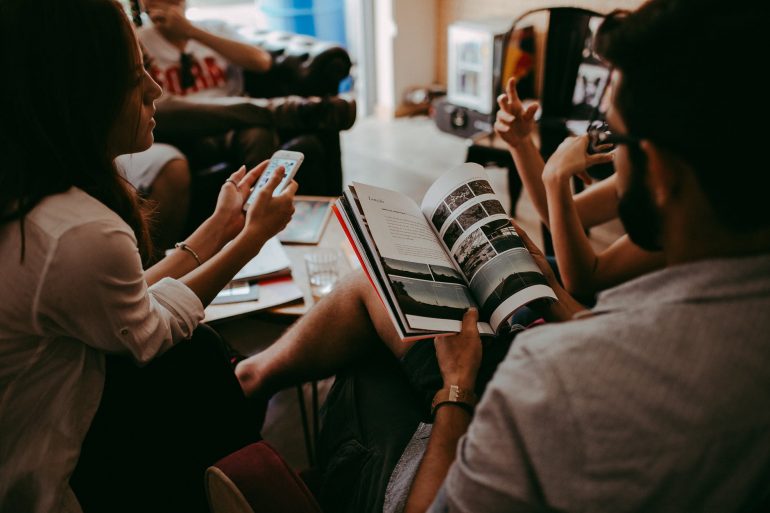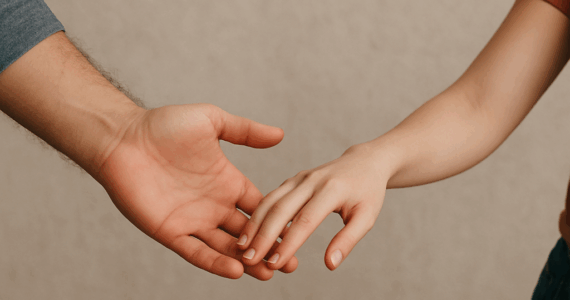Source: https://www.psychologytoday.com/blog/emotional-freedom/201402/three-techniques-read-people
As a psychiatrist my job is to read people, not just what they say, but who they are. Interpreting verbal and nonverbal cues, I want to see past their masks into the real person. Logic alone won’t tell you the whole story about anybody. You must surrender to other vital forms of information so that you can learn to read the important non-verbal intuitive cues that people give off. To do this, you must also be willing to surrender any preconceptions, or emotional baggage such as old resentments or ego clashes, that stop you from seeing someone clearly. The key is to remain objective and receive information neutrally without distorting it.
Whether you’re reading your boss, co-worker, or partner to understand people accurately you must surrender biases, some walls must come down. As brilliant as the intellect is, you have to be willing to let go of old, limiting ideas. People who read others well are trained to read the invisible. They’ve learned to utilize what I call their “super-senses” to look further than where you usually put your attention to access life-changing intuitive insights. I invite you to explore some of these different methods of reading people from my book, The Ecstasy of Surrender. They all require surrendering pure logic in favor of also receiving alternative, non-linear forms of input.
Three Techniques in the Art of Reading People
The First Technique. Observe Body Language Cues
Research has shown that words account for only seven percent of how we communicate whereas our body language (55 percent) and voice tone (30 percent) represent the rest. Here, the surrender to focus on is letting go of trying too hard to read body language cues. Don’t get overly intense or analytical. Stay relaxed and fluid. Be comfortable, sit back, and simply observe.
Here are a few examples of the Body Language Cues. I outline many more useful techniques in The Ecstasy of Surrender:
1. Pay Attention to Appearance
When reading others notice: Are they wearing a power suit and well-shined shoes, dressed for success, indicating ambition? Jeans and a t-shirt, indicating comfort with being casual? A tight top with cleavage, a seductive choice? A pendant such as a cross or Buddha indicating spiritual values?
2. Notice Posture
When reading people’s posture, ask yourself: Do they hold their head high, confident? Or do they walk indecisively or cower, a sign of low self-esteem? Do they swagger with a puffed out chest, sign of a big ego?
3. Watch For Physical Movements
Leaning and Distance—Observe where people lean. Generally, we lean toward those we like and away from those we don’t.
Crossed arms and legs—This pose suggests defensiveness, anger, or self-protection. When people cross their legs they tend to point the toes of the top leg towards the person they are most at ease with.
Hiding one’s hands—When people place their hands in their laps, pockets, or put them behind their back it suggests that they are hiding something.
Lip biting or cuticle picking—When people bite or lick their lips or pick their cuticles they are trying to soothe themselves under pressure or in an awkward situation.
4. Interpret Facial Expression
Emotions can become etched on our faces. Deep frown lines suggests worry or over-thinking. Crow’s feet are the smile lines of joy. Pursed lips signal anger, contempt, or bitterness. A clenched jaw and teeth grinding are signs of tension.
The Second Technique. Listen to Your Intuition
You can tune into someone beyond their body language and words. Intuition is what your gut feels, not what your head says. It’s nonverbal information you perceive via images, ah-has, and body knowings, rather than logic. If you want to understand someone, what counts the most is who the person is, not their outer trappings. Intuition lets you see further than the obvious to reveal a richer story.
Checklist of Intuitive Cues
1. Honor your gut feelings
Listen to what your gut says, especially during first meetings, a visceral reaction that occurs before you have a chance to think. It relays whether you’re at ease or not. Gut feelings occur quickly, a primal response. They’re your internal truth meter, relaying if you can trust people.
2. Feel the goosebumps
Goosebumps are marvelous intuitive tingles which convey that we resonate with people who move or inspire us, or are saying something that strikes a chord. Goosebumps also happen when you experience deja-vu, a recognition that you’ve known someone before, though you’ve actually never met.
3. Pay attention to flashes of insight
In conversations, you may get an “ah-ha” about people which comes in a flash. Stay alert. Otherwise you might miss it. We tend to go onto the next thought so rapidly these critical insights are lost.
4. Watch for intuitive empathy
Sometimes you can feel people’s physical symptoms and emotions in your body which is an intense form of empathy. So, when reading people, notice, “Does my back hurt when it didn’t before? Am I depressed or upset after an uneventful meeting?” To determine if this is empathy, get feedback.
The Third Technique. Sense Emotional Energy
Emotions are a stunning expression of our energy, the “vibe” we give off. We register these with intuition. Some people feel good to be around; they improve your mood and vitality. Others are draining; you instinctively want to get away. This “subtle energy” can be felt inches or feet from the body, though it’s invisible. In Chinese medicine it’s called chi, a vitality that’s essential to health.
Strategies to Read Emotional Energy
1. Sense people’s presence
This is the overall energy we emit, not necessarily congruent with words or behavior. It’s the emotional atmosphere surrounding us like a rain cloud or the sun. As you read people notice: Do they have a friendly presence that attracts you? Or are you getting the willies, making you back off.
2. Watch people’s eyes
Our eyes transmit powerful energies. Just as the brain has an electromagnetic signal extending beyond the body, studies indicate that the eyes project this too. Take time to observe people’s eyes. Are they caring? Sexy? Tranquil? Mean? Angry? Also determine: Is there someone at home in their eyes, indicating a capacity for intimacy? Or do they seem to be guarded or hiding?
3. Notice the feel of a handshake, hug, and touch
We share emotional energy through physical contact much like an electrical current. Ask yourself, Does a handshake or hug feel warm, comfortable, confident? Or is it off-putting so you want to withdraw? Are people’s hands clammy, signaling anxiety. Or limp, suggesting being non-committal and timid?
4. Listen for People’s Tone of Voice and Laugh
The tone and volume of our voice can tell much about our emotions. Sound frequencies create vibrations. When reading people, notice how their tone of voice affects you. Ask yourself: Does their tone feel soothing? Or is it abrasive, snippy, or whiny?








